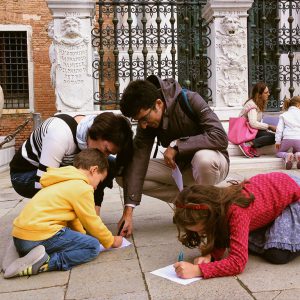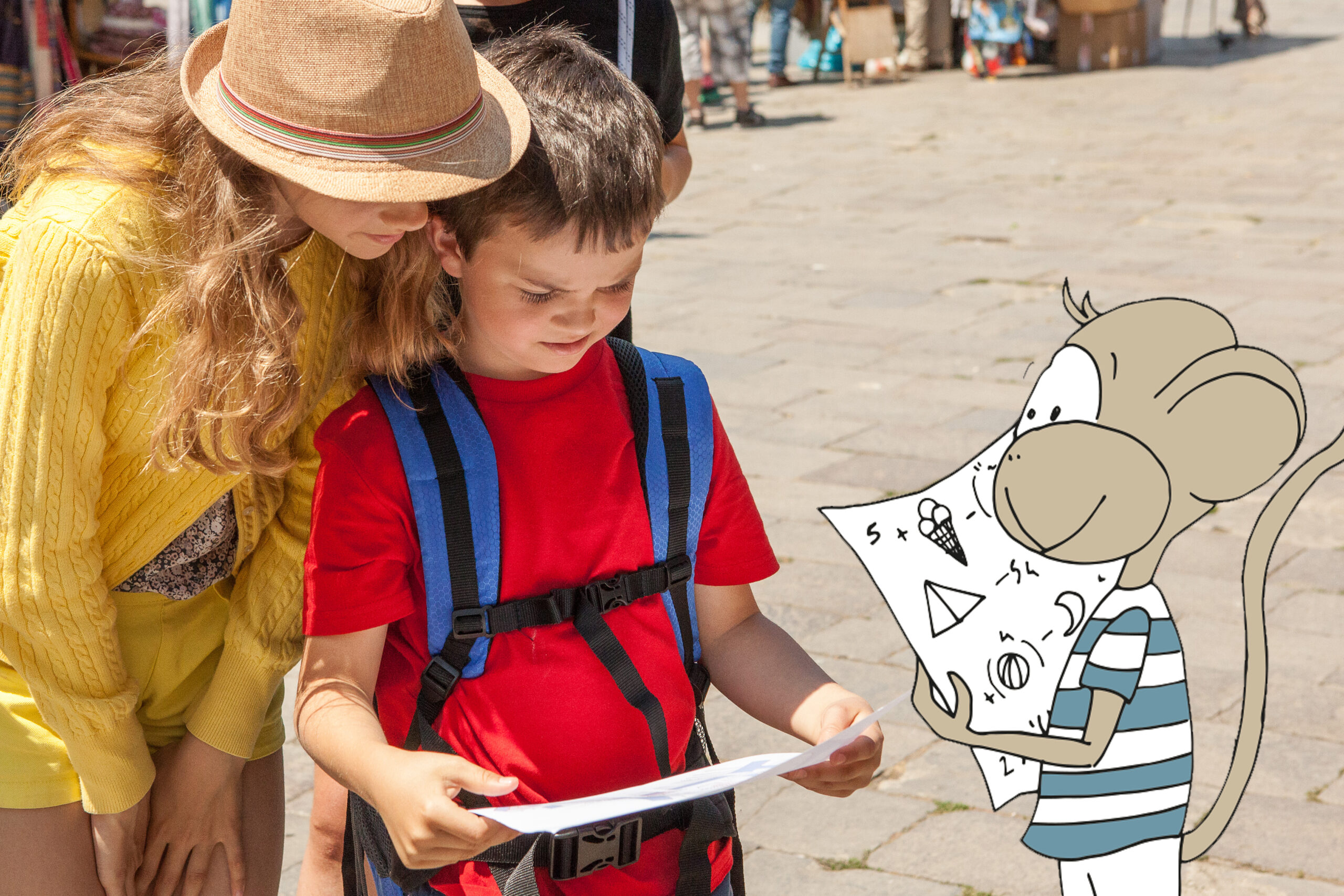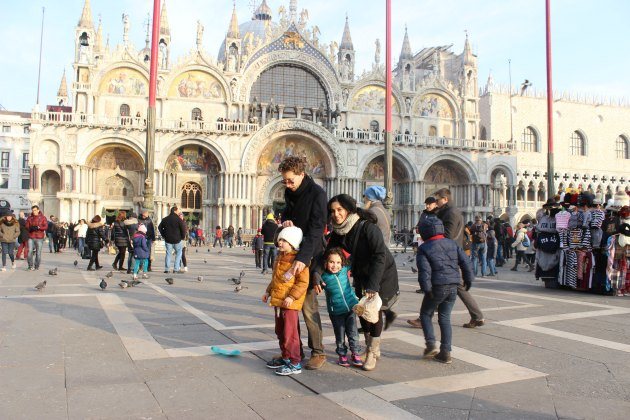Any self-respecting trip leaves us something that we did not have beforehand; any genuine experience of visiting a new city or a new country offers us unexpected perspectives, points of view that we had previously not taken into consideration.
…it’s always a matter of changing points of view: we believe that Venice can represent a great training ground for your families and your children to practice their powers of observation!
A family arriving in Venice for the first time might feel overwhelmed, almost bombarded by an infinite number of inputs provided by the city: gazes dart around in a desperate search for somewhere to pause, inundated with so much beauty, so many unique details and so many people rushing back and forth.
Just like muscles in a gym, our gaze also needs practice to be able to observe properly. As well as to pause and rest… so which city, better than Venice, lends itself perfectly to the application of the philosophy of “slowness”? Encourage your children to focus on how the water flows, to listen to its sound and, perhaps, even try to feel its sweet rhythm together!

Below is the first practical “exercise” that we recommend to everyone: mums, dads, grandparents, children and teenagers!
– Adopt a theme for your stroll around Venice. Here’s one we recommend: WINDOWS!
– Savour every step as, head turned skywards, you scan the facades of houses and buildings. You will discover endless little, semi-hidden treasures… Have a looking competition… Who can find the most treasures in 3 minutes? Writing what you find in a notebook might help.
– The windows in Venice are little works of art: two-, three-, four-mullioned and Serlian windows… so many eyes overlooking the teeming narrow streets and canals. Can you tell the difference between them?
– Keep a small diary with your children in which to write down the shape, colour, decoration and “distinguishing features” of the windows you liked most in exercise 1 or 2.
– Make some sketches! Windows that are open or closed, wide or narrow, rickety or ornate, adorned with drapes or bare… use them to create novel compositions that can be recomposed at home like puzzles, perhaps using different materials.
– Take the main shapes and rejig them! Ovals, rectangles, circles and diamonds can become the stylised elements of a thousand faces that wander around and watch over the city…
…Now it’s your turn!




